Topical Blend #4, Part 2
Back in March of 2005, I decided I wanted to stretch my writing muscles, so I borrowed an idea from my days of running an improv troupe. I asked my readers for two list of topics they wanted me to write about, one Magic and one non-Magic. I then posted the lists and let my audience vote on them. The winning topics were My Ten Worst Designed Cards and Girls. This column was the result. (I consider "To Err Is Human" to be one of my best columns, so if you've never read it I encourage you to do so.) I went on to write two more Topical Blends. (Here and here—Note the second one lost all its layout so it's very hard to follow.)
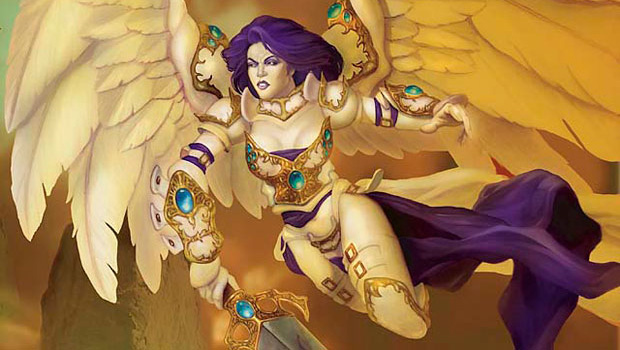
Akroma, Angel of Wrath | Art by Ron Spears
Last week was Fate Week, so I decided it was time to do my fourth Topical Blend column, this time letting fate pick the categories. The result was My Pick For the Best Designed Card in Every Set (I limited myself to picking the best card from an entire block and just the last ten blocks in Modern) and magic (lowercase, as in "Hocus Pocus").
Today's column is Part 2, so if you haven't read Part 1, I suggest you do so first.
- Topical Blend #4—Avoiding Peanuts, Part 2
Today I will cover Shadowmoor block through Innistrad block.
- Lesson #6—Stretch Yourself
As I'm talking about my magic act, it might seem like a singular entity, but it was not. My magic act was an ever-evolving thing. I was constantly buying new tricks, changing how I did old tricks, and shifting my lineup. I was constantly on the lookout for ways to connect my tricks. As I explained last week, you want your act to feel like a cohesive show, so it's very important to find opportunities to make the show feel linked.
Part of this constant improvement process was experimentation. Sometimes it was a little thing, like swapping which trick went first. Sometimes it was changing around how I set up a trick. And sometimes it was just trying something I had never done to see what response I would get. It's very easy in any creative endeavor to stick with what works. There are known successes and there is a lot of inertia that makes you want to stick to the tried and true. The problem with the tried and true, though, is that it will never allow you to make a new breakthrough.
I often talk about my favorite book, A Whack on the Side of the Head, by Roger von Oech. I talk much less about the follow-up book called A Kick In The Seat of the Pants. (While not quite as good as Whack, it's still a very good read.) In it, Von Oech talks about the idea that you play four roles when bringing a creative idea to fruition: The Explorer, The Artist, The Judge, and The Warrior.
The Explorer has to brave the unknown and find the new idea. The Artist shapes and crafts it into its final form. The Judge figures out whether or not the idea is worth pursuing. The Warrior then fights for the ideas the Judge accepts.
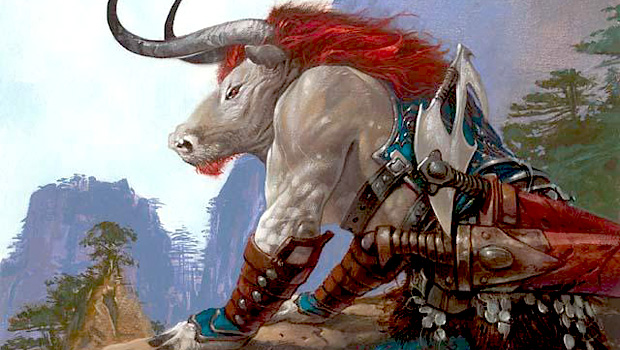
Minotaur Explorer | Art by Dave Dorman
This lesson is all about embracing your inner Explorer.
New ideas seldom come knocking on your door. You have to seek them out. Doing so includes risk because the unknown is just that: You never know what to expect when you venture to a brand-new area. That is why, for every show, I would try something new. Like I said above, that new thing could take many forms, but I always made sure to let my Explorer get a little time to do his job.
My best advice, from a performance angle, is to always put your experimentation in the middle. You want to warm up your audience with your tried-and-true material because if you don't get the audience's attention, the experimentation is for naught. You want to end with known material because the audience tends to set its memory based on the last thing you did. You want to end strong to leave as positive an impression as possible. That leaves the middle as the opportune time to explore.
For Magic sets, the best space to experiment is usually the rare slot. If you're experimenting with Limited, use the uncommon slot. Why? Because rare cards are allowed to be a little more out there. Also, rares are allowed to be more pinpoint in their focus because they show up much less in Limited.
My pick for the best-designed card in Shadowmoor block is a stretch card that would later pay off dividends many sets later.
Figure of Destiny was created by Brian Tinsman. He loved the idea of a creature that leveled up. The original card was a little out there, but my philosophy for Magic sets is the same as my philosophy for magic sets. You have to spend a little of each set stretching. Note that, by stretching, I don't merely mean something you haven't done before. It's very easy to make a tweak to an existing card or mechanic, but if the thing you are basing the new element on was already successful, you aren't stretching.
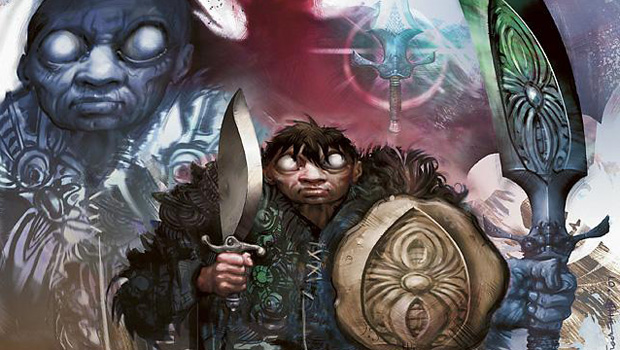
Figure of Destiny | Art by Scott M. Fischer
What I like to see in every set is something that has the potential to fail. I want to be messing around in a space I am not comfortable in. So many of my homeruns have been ideas that a chunk of Ramp;D was hesitant to do—split cards, hybrid mana, the 4/3/3 guild breakdown, tribal as a block theme, a "land block," double-faced cards. Each of these is a success with 20/20 hindsight, but that's only because I was willing to take a risk.
Figure of Destiny obviously led to level-up creatures, but its design is much more important than that. It showed that cards that change flavorfully over time was a whole new mechanic vein for us to explore. Double-faced cards also owe their existence to the popularity of Figure of Destiny. Yes, flip cards pre-existed Figure of Destiny but they were considered a failure. Figure of Destiny managed to take an idea we had abandoned and show it really did have potential.
And for that, it gets my pick as the top design of Shadowmoor block. Not every stretch pays off (please remember that and don't stop because you have a few failures—that's par for the course) but when it does, something magical can happen.
- Lesson #7—Sometimes You Want to Go Over the Top
I explained last week that because I focused on young children (ages 5–10) most of my magic shows were for birthday parties. As such, I tended to end my show on a trick known as a Cake Pan (or sometimes a Dove Pan). Here's how it worked: I showed the audience an empty pan with a cover. I would then explain that since it was a birthday cake, I was going to bake a cake, but since I was a magician, I was going to bake it with magic.
I would have the kids yell out what ingredients they felt the cake needed and then I would write each ingredient down on a slip of paper and put it in the pan. Once we had all the ingredients, I would put the top on the pan and do my magic ("Bake us a Cake-us"). I would take off the pan to reveal a cake, a real frosted cake which I would then cut a piece out of and serve to the birthday boy or girl.
Now, many magicians, when they do this trick, use a prop cake—something they can reuse each time they did it. I, though, would bake a cake for every show. Why? Because this was my big closer. I wanted to leave the kids wowed. It's one thing to make a plastic cake appear out of nowhere but it's another thing entirely to make a real cake appear the child then gets to eat.
Psychologically, the difference is huge. One is just this thing that represents a cake and the other is A CAKE! This wasn't just a thing. The kid literally ate it. He didn't just see it, he smelled it, he felt it, he tasted it. I used to love cutting out the piece of cake because the kid usually was shocked. I don't know what he thought I had produced but somehow it actually being a cake that I served him would leave him speechless.
The reason I baked a cake for every show is, when you are trying to wow your audience, sometimes you have to pull out all the stops. It's important you pick your time and place, because you can't overdo everything. Moderation is important most of the time, but it's important as an artist to have moments where you blow away your audience.
The same is true for Magic design. Not every set or every mechanic or every card can blow away your audience, but every once in a while you need to do that.
My pick for the best design of Shards of Alara block is a perfect example of a card that generated the same reaction to handing the birthday boy or girl a slice of cake.
The number-one question I got about this card was, "Does it have protection from BLAH?" to which I always have to answer, "Yes, it has protection from everything." It was fun watching players try to take in this card because, for many, it just blew their minds. This card was created by Mark Gottlieb, who was, at the time, the rules manager. He realized one day that protection from everything would work and squirreled it away for the right time and place. That place turned out to be Conflux.

Progenitus | Art by Jaime Jones
- Lesson #8—Sometimes the Best Thing is Just Doing Something Well
I've talked in this week's and last week's articles about the many ways I used to spice up my magic show. One of the most important things, though, has been glossed over. One way to wow the audience: do your tricks very well. It's easy when trying to add excitement to look at all the add-ons you can attach to the show, but it leads to a common mistake many artists make.
The key indicator on whether or not your audience is going to like the thing you have to offer is how well you do that thing. In my off hours, when I wanted to improve my magic show, you know what I did? I practiced. I didn't spend my time hunting down bells and whistles, I put my energy into increasing the quality of my art. For example, one of my tricks involved a floating ball. I would bring out a metal ball named Herbie and put him on a little metal stand. Then I would cover it with a large silk handkerchief (Herbie was very shy) and make Herbie float. He'd always peek out from behind the handkerchief so the kids could see him.
That trick was a very hard one to do because it involved dexterity on my part. Not all magic tricks require physical dexterity, but some do. By spending time practicing that trick I was able to greatly improve what I could do with it. It became one of my most popular tricks because I was able to do more and more with it.
This lesson applies very easily to Magic. Many times, the cards that get the focus are the cards doing splashy things. Sometimes, though, the thing that shines most is the card doing the simple thing but doing it very well.
My pick for the best designed card in Zendikar falls into this category.
Landfall, in my mind, was the big success of Zendikar design. Much of its success was its elegance. It did so much with so little. It mattered in every game but always in different ways, creating fun game play moments. Lotus Cobra to me is the landfall card that just came together perfectly.

Lotus Cobra | Art by Chippy
This card was designed in parallel by myself and Graeme Hopkins. Parallel design means we both came to the same card from different vantage points. The cards were close enough to one another that I combined them into a single card. Like Herbie, Lotus Cobra shined best because it just did what it was supposed to so well.
- Lesson #9—There are Other Emotions Than Happiness
Here's another myth about performance: If you want your audience to enjoy your performance you have to make them happy. That's not at all true. The role of a performance is to create an emotional response (as are games, see Zac's article from two weeks ago). That emotion, though, need not be happiness. Horror films can scare you. A great drama can make you cry. Even a magic show can elicit other responses.
The key to understanding performing magic for 5–10-year-olds is this: In their hearts, they want to believe in magic. They love the idea of magic, but they are skeptical. Parents usually have let on to their kids that magic really isn't magic, but the kids haven't had a chance to prove it to themselves. (Note this is truer about the older kids than the younger ones; the youngest still believe). The end result is that these kids are looking to catch you—to figure out your tricks. Understanding this allows you, the magician, to get them to play right into your hands.
The tool for doing this is what is known in magic as a sucker trick. Here's how they work: You do a trick. The trick has an obvious answer to how you're doing it. The kids try to point out that they know how you're doing the trick. You get to play around with them for a few minutes as they try to prove to you that they've figured it out. You play dumb and make them keep clarifying what they mean. Finally, you do the thing they've asked for and... they get surprised because what they thought isn't true at all.
Sucker tricks work great on this age range. The interesting thing about sucker tricks is that for most of the trick you are frustrating the audience. You're making them mad. Why don't you just get what they're saying? Usually there's a lot of shouts of "Nooooo!" as you're not doing what they want you to do. But when the final moment happens they are all revved up and the reaction is always a thing of beauty. You can often see the awe in their eyes as the "How did he do that?" runs through their brains.
Magic design is similar in that sometimes your role isn't to make the audience happy but instead to rile it up. A big part of what makes Magic click is the community. As I've often said, most players spend the minority of their time on Magic actually playing the game. The majority of time spent by most invested players is interacting with other invested players—be that reading, talking, or posting.
My pick for the best-designed card from Scars of Mirrodin is the most controversial choice of my ten. The reason, I think, is that it created more ruffling of feathers than celebration.
I think this choice is controversial for all sorts of reasons. The Colossus is a tweak of an existing card. It involves infect, which was very polarizing. It was met with a mixed reaction when it was previewed. I chose it because of all these things. The card was a lightning rod on purpose for a very specific reason. I designed the card (originally for New Phyrexia, interestingly) because I wanted to communicate the infection of Mirrodin by the Phyrexians in a big bold way. We wanted the audience to get a sense of the violation the Mirrans were feeling by the invasion. They had to watch their biggest weapon turned against them. Phyrexian Colossus did exactly what it was supposed to: make a big bold statement.

Blightsteel Colossus | Art by Chris Rahn
I've decided not to share my back-up on my picks. But just for this one, as I'm sure it will lead to a few words, I'll let you know what almost won: Contagion Clasp. I chose it as I felt it was the cleanest proliferate design, which was the homerun mechanic of the block.
- Lesson #10—Presentation Matters
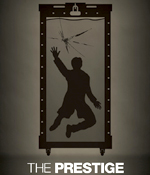
For those of you who have seen the film The Prestige (by director Christopher Nolan, director of Inception and The Dark Knight) it explains the three parts of a magic trick: the pledge, the turn, and the prestige. Note that these are old terms and aren't used by modern magicians (well, maybe now by those who have seen The Prestige).
The pledge is the part of the trick where the magician shows you something ordinary looking and asks you to inspect it to make sure that it is, in fact, just an ordinary item. (Hint: it usually isn't.) The turn is where the magician does something extraordinary with it: Make it disappear. Make it float. Turn it into something else. The prestige is the third part, where the magician now completes the trick. The magician undoes whatever extraordinary thing he or she did to return everything back to normal.
So which is the most important part of the trick: the pledge, the turn, or the prestige? As someone who's performed magic, the answer is... none of the above. The most important part of a trick is what is known as the patter. What's the patter? Patter is the term used to describe all the words the magician says while doing the trick. Patter is the presentation. Patter is the salesmanship of the trick. Why is this important? Because, as I said earlier, most tricks are very predictable. You know where they're going. What makes a trick fun is not just the trick itself but the presentation of the trick. A good magician sells the trick with his or her patter.
The best example of this was in magic class. The teacher, a professional magician, would show us the trick and wow us. He would show us how the trick was done and then each member of the class would try. Even though they would do it, it wouldn't seem nearly as impressive. Why? Because a big part of the audience's reaction comes from you, the performer. For instance, watch how a good magician is surprised by his trick. He's not surprised! He knows how the trick works. The reason he's surprised is because it clues in the audience that they're supposed to be surprised.
When it comes to Magic design, presentation is equally important. Good designers don't just design an effect, they design a card. Lesser designers can create the effect but if they don't understand how to sell it, they are missing how to maximize its effectiveness.
Case in point:
My pick for the best-designed card in the Innistrad block.
The reason I picked this card is that, in a set all about top-down horror, this is the card where I felt all the pieces came together the best. I talked about how we had never presented zombies as they had been presented in pop culture, as our audience truly knows them. I feel like Endless Ranks of the Dead finally delivers on a Zombie card that feels like a zombie card.
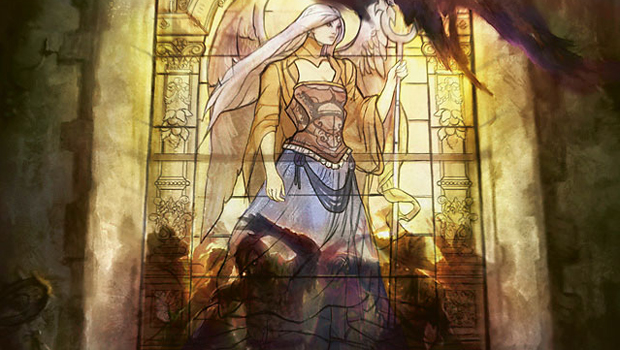
Endless Ranks of the Dead | Art by Ryan Yee
It only felt right to pick a top-down design in a top-down set. Endless Ranks of the Dead demonstrates how you can use mechanics to paint flavor. The card doesn't just look like a card out of a horror set (and the creative team hit this particular card out of the park) it plays like one. It's my favorite design of Innistrad and one of my personal favorite designs I've ever done.
- Abra Kadabra
As with all Topical Blends, I never know what I'm going to end up with when I start. I enjoyed writing this two-parter. I hope you all enjoyed reading it. I'd love to have any feedback (the thread, my email, Twitter, Tumblr, Google+) you might have.
Join me next week when I grant everyone +1/+1.







